AN UNORTHODOX BUT VISIONARY MAN
Mystery makes the life of Sheridan area benefactor Edward Augustus Whitney a compelling story. When he died in 1917, he left a financial legacy of $852,000 or approximately $14 million in today’s dollars, but little personal history. Although some of Whitney’s relatives became famous for their extreme wealth, Edward Whitney came from only modest riches, the legacy of enterprising and intellectually confident ancestors.EARLY LIFE
The third child of Abel and Pamelia (Babcock) Whitney, Edward Augustus was born March 24, 1843, in Dalton, Massachusetts. Edward’s father, Abel, was a prominent merchant in the wholesale flour business. Edward’s brother John, was four years his senior. Edward also had two sisters; Clarissa, two years older, and Mary Louisa, two years younger. Tragedy struck the family when Edward was very young. His sister Mary Louisa died in 1846, and in 1849, both his mother and older sister died within three months of each other. Between 1843 and 1850 the family moved from Dalton on the far western side of the state, to Lowell, Massachusetts, in the northeast corner of the state. In Lowell, Edward’s father owned a book store and his brother John worked there as a clerk. Edward’s father Abel remarried in 1850, this time to Belinda Baxter Bliss, and they had two children, Henry Dwight and Mary Ella. From 1856 to 1859, Edward attended the Sillig Institution, a boy’s school near Vevey, Switzerland. The school promoted its high quality education in classical, scientific, military, and commercial subjects, as well as guidance in general, moral, mental, and physical development. All lessons were taught in French, and the school itself was located on the Swiss Riviera, an area noted for its healthful climate. Great emphasis was placed on healthful outdoor exercise, and hiking in the Alps was apparently one of Edward’s favorite activities. Tragedy struck the family again, when Henry died in 1860, and Mary Ella died in 1867. After returning from Switzerland (1859), Edward, now 17, moved to Northampton, Massachusetts and lived with his uncle, Josiah Dwight Whitney. Now retired, Josiah had been in the flour business, and was a broker and private banker before becoming the cashier (manager) of the Northampton Bank. In the 1850s he served as the bank’s President and Director. Uncle Josiah was also active in charity, community, and church work. Josiah had a very large family (in fact, Josiah fathered fourteen children with two wives) and Edward must have enjoyed his cousins immensely. According to the 1860 Census, Edward worked as a clerk in his uncle’s bank, and his cousin Henry, who was the same age, was a student at Yale College.CIVIL WAR
In August 1862, Edward and his cousin Henry (both age 19) enlisted in the 52nd Massachusetts Volunteer Infantry Regiment. Their unit was involved in the assault of Port Hudson in July 1863, which gained control of the Hudson River for the Union Army. Both Edward and Henry rose in the ranks and mustered out at the end of their nine month term of enlistment. Cousin Henry served in other positions related to the war, and later resumed his studies in theology at Princeton. He was later a pastor in the Congregational Church, a professor of rhetoric and English literature at Beloit College, Wisconsin, and retired as the librarian of Blackstone Memorial Library, Branford, Connecticut.GOING WEST
By the time he was 25, Whitney was fluent in French, had lived in Switzerland, traveled Europe extensively and served in the Civil War. He left all that behind and came west, first to Iowa, then to Wyoming. There is a chance that Whitney arrived in Iowa after returning from a visit to Yellowstone before it was a national park. The Whitney papers include a 1928 speech written by the editor of the Sheridan Post-Enterprise, L.L. MacBride, which included the following excerpt about Mr. Whitney: “Once in his earlier days, he read an army report telling of a region that had been found in the great and unexplored Northwest where steaming geysers could be seen on every side. Mr. Whitney immediately came west as far as the railroad would take him, and then traveled up the Missouri and the Yellowstone to Fort Benton on a little mud steamer. Then he set out through the wilderness for the Union Pacific railroad in the Snake River country. But he saw the wonders of what later was to become Yellowstone Park.” If correct, this would have made Mr. Whitney one of the first white men to enjoy the incredible wonders of what years later would become Yellowstone National Park. In 1885, Whitney arrived in Sheridan. It has also been said that Whitney came to the Sheridan area for his health. His medical records indicate he suffered from chronic bronchiectasis, one of the chronic obstructive pulmonary diseases. This condition may have caused Whitney to keep to himself, but the dry western climate offered some relief. It seems remarkable that despite his cosmopolitan background, this highly educated, well-traveled, and well-to-do man of the world, somehow made his way to the brand new town of Sheridan, WY platted only three years earlier. He never married and had, with one exception, no connection with his birth family. Solitary and introverted (but not anti-social) Whitney died an enigmatic figure. Mr. Whitney died at the age of 74 on November 18, 1917 in his living quarters above the bank where he’d lived his entire life in Sheridan. The cause of his death was chronic bronchiectasis, from which he had suffered for a number of years. Whitney’s will instructed that his cremated ashes be divided and half buried at Sheridan’s Mount Hope Cemetery. The inscription on his headstone reads “What a man really believes seems to him to be really true, but that does not make it so, except to his mind.” The other half were to be buried across the lake from the boarding school he had attended as a boy. His wishes were very specific; the burial site was to have an unobstructed view of the Dent du Midi Mountains near Lake Geneva, Vevey, Switzerland. Joseph Dayton Thorn, the executor of Whitney’s estate deposited the ashes in 1921 while on a three month vacation in Europe.WHITNEY TRUNK
The world got a better understanding of Whitney in 2004 when a trunk of his belongings was discovered. It contained land patents, legal papers, number filled journals, receipts from his world travels, but still few personal effects. Still, the documents provided a framework for understanding this mysterious man and his unorthodox but visionary nature. Among Whitney papers is a yellowed adding machine tape with his penciled notes pointing out an error here and there. It is dated November 19, 1917. On the day that Whitney died, he was still calculating his net worth, still taking solace in numbers.‘My estate does not belong to me; I’m only its steward: it belongs to
the people and I dare not be careless with it.’ - Edward A. Whitney
WHITNEY BENEFITS FOUNDATION
Edward A. Whitney willed his estate to establish Whitney Benefits, creating the first educational foundation in Wyoming. According to his original trustees, Whitney spent three decades of his life planning his gift to the people of Sheridan County. He made extensive investigations in the East as to how trust funds were structured for education, and repeatedly asked his three associates, later to become the trustees of his estate, for suggestions. The foundation was established in 1927, ten years after his death in 1917, as provided by his will. In the years since the establishment of the foundation the earnings from the trust have provided over $46 million in interest-free loans to over 6,100 local students, contributed over $101 million to Sheridan College, provided over $11.7 million to the YMCA, built Whitney Commons Park and the Sheridan Ice Rink, established the downtown Whitney Center which houses the Sheridan College Simulation Center, and benefited the area and its people in many other ways. Whitney left two legacies: an educational foundation, Whitney Benefits, and an unorthodox but visionary will that has become one of most enduring legal instruments in Wyoming trust law. Whitney is famously remembered for the quote, “My estate does not belong to me; I am only its steward, it belongs to the people and I dare not be careless with it.” The will was Whitney’s passion and he never let it rest. He began writing the document in 1890 and was still amending it weeks before he died in 1917. The will establishes that the foundation can fund three areas:1. To create an interest free student loan program to help both “the hand worker and the brain worker” with educational expenses. 2. To create a community center for the advancement of education and benefit the residents of Sheridan County that must be located in the city of Sheridan. 3. To establish and fund an agricultural college in Sheridan, Wyoming. In 2011, Whitney Benefits announced the launch of two individual books regarding Edward A. Whitney and the Whitney Benefits foundation by Sam Western. The books “The History of Whitney Benefits” and “Solace in Numbers,” a biography of Edward A. Whitney, are available at Sheridan Stationery Books Gallery located in Sheridan. -- --- -- Follow this link to read the eulogy from Mr. Whitney's funeral services held at 2:00 pm on Tuesday, November 20th, 1917 as read by Rev. C.F. Fisher.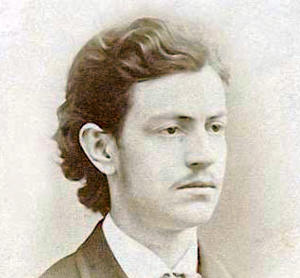
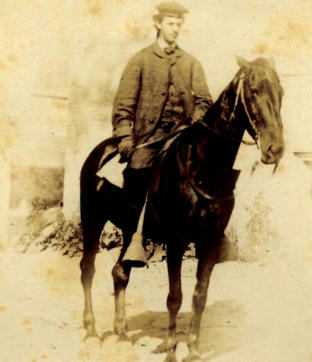
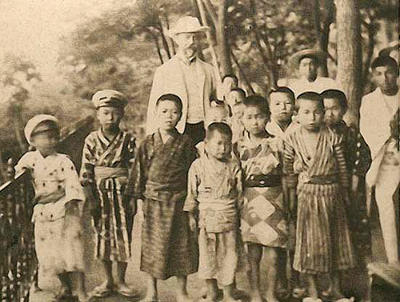


An Educational Foundation by the late Mr. Edward A. Whitney
Edward A. Whitney
© Whitney Benefits, Inc. All Rights Reserved
Phone: 307-674-7303

AN UNORTHODOX BUT VISIONARY MAN
Mystery makes the life of Sheridan area benefactor Edward Augustus Whitney a compelling story. When he died in 1917, he left a financial legacy of $852,000 or approximately $14 million in today’s dollars, but little personal history. Although some of Whitney’s relatives became famous for their extreme wealth, Edward Whitney came from only modest riches, the legacy of enterprising and intellectually confident ancestors.EARLY LIFE
The third child of Abel and Pamelia (Babcock) Whitney, Edward Augustus was born March 24, 1843, in Dalton, Massachusetts. Edward’s father, Abel, was a prominent merchant in the wholesale flour business. Edward’s brother John, was four years his senior. Edward also had two sisters; Clarissa, two years older, and Mary Louisa, two years younger. Tragedy struck the family when Edward was very young. His sister Mary Louisa died in 1846, and in 1849, both his mother and older sister died within three months of each other. Between 1843 and 1850 the family moved from Dalton on the far western side of the state, to Lowell, Massachusetts, in the northeast corner of the state. In Lowell, Edward’s father owned a book store and his brother John worked there as a clerk. Edward’s father Abel remarried in 1850, this time to Belinda Baxter Bliss, and they had two children, Henry Dwight and Mary Ella. From 1856 to 1859, Edward attended the Sillig Institution, a boy’s school near Vevey, Switzerland. The school promoted its high quality education in classical, scientific, military, and commercial subjects, as well as guidance in general, moral, mental, and physical development. All lessons were taught in French, and the school itself was located on the Swiss Riviera, an area noted for its healthful climate. Great emphasis was placed on healthful outdoor exercise, and hiking in the Alps was apparently one of Edward’s favorite activities. Tragedy struck the family again, when Henry died in 1860, and Mary Ella died in 1867. After returning from Switzerland (1859), Edward, now 17, moved to Northampton, Massachusetts and lived with his uncle, Josiah Dwight Whitney. Now retired, Josiah had been in the flour business, and was a broker and private banker before becoming the cashier (manager) of the Northampton Bank. In the 1850s he served as the bank’s President and Director. Uncle Josiah was also active in charity, community, and church work. Josiah had a very large family (in fact, Josiah fathered fourteen children with two wives) and Edward must have enjoyed his cousins immensely. According to the 1860 Census, Edward worked as a clerk in his uncle’s bank, and his cousin Henry, who was the same age, was a student at Yale College.CIVIL WAR
In August 1862, Edward and his cousin Henry (both age 19) enlisted in the 52nd Massachusetts Volunteer Infantry Regiment. Their unit was involved in the assault of Port Hudson in July 1863, which gained control of the Hudson River for the Union Army. Both Edward and Henry rose in the ranks and mustered out at the end of their nine month term of enlistment. Cousin Henry served in other positions related to the war, and later resumed his studies in theology at Princeton. He was later a pastor in the Congregational Church, a professor of rhetoric and English literature at Beloit College, Wisconsin, and retired as the librarian of Blackstone Memorial Library, Branford, Connecticut.GOING WEST
By the time he was 25, Whitney was fluent in French, had lived in Switzerland, traveled Europe extensively and served in the Civil War. He left all that behind and came west, first to Iowa, then to Wyoming. There is a chance that Whitney arrived in Iowa after returning from a visit to Yellowstone before it was a national park. The Whitney papers include a 1928 speech written by the editor of the Sheridan Post-Enterprise, L.L. MacBride, which included the following excerpt about Mr. Whitney: “Once in his earlier days, he read an army report telling of a region that had been found in the great and unexplored Northwest where steaming geysers could be seen on every side. Mr. Whitney immediately came west as far as the railroad would take him, and then traveled up the Missouri and the Yellowstone to Fort Benton on a little mud steamer. Then he set out through the wilderness for the Union Pacific railroad in the Snake River country. But he saw the wonders of what later was to become Yellowstone Park.” If correct, this would have made Mr. Whitney one of the first white men to enjoy the incredible wonders of what years later would become Yellowstone National Park. In 1885, Whitney arrived in Sheridan. It has also been said that Whitney came to the Sheridan area for his health. His medical records indicate he suffered from chronic bronchiectasis, one of the chronic obstructive pulmonary diseases. This condition may have caused Whitney to keep to himself, but the dry western climate offered some relief. It seems remarkable that despite his cosmopolitan background, this highly educated, well-traveled, and well-to-do man of the world, somehow made his way to the brand new town of Sheridan, WY platted only three years earlier. He never married and had, with one exception, no connection with his birth family. Solitary and introverted (but not anti- social) Whitney died an enigmatic figure. Mr. Whitney died at the age of 74 on November 18, 1917 in his living quarters above the bank where he’d lived his entire life in Sheridan. The cause of his death was chronic bronchiectasis, from which he had suffered for a number of years. Whitney’s will instructed that his cremated ashes be divided and half buried at Sheridan’s Mount Hope Cemetery. The inscription on his headstone reads “What a man really believes seems to him to be really true, but that does not make it so, except to his mind.” The other half were to be buried across the lake from the boarding school he had attended as a boy. His wishes were very specific; the burial site was to have an unobstructed view of the Dent du Midi Mountains near Lake Geneva, Vevey, Switzerland. Joseph Dayton Thorn, the executor of Whitney’s estate deposited the ashes in 1921 while on a three month vacation in Europe.WHITNEY TRUNK
The world got a better understanding of Whitney in 2004 when a trunk of his belongings was discovered. It contained land patents, legal papers, number filled journals, receipts from his world travels, but still few personal effects. Still, the documents provided a framework for understanding this mysterious man and his unorthodox but visionary nature. Among Whitney papers is a yellowed adding machine tape with his penciled notes pointing out an error here and there. It is dated November 19, 1917. On the day that Whitney died, he was still calculating his net worth, still taking solace in numbers.‘My estate does not belong to me; I’m only its steward: it belongs to the people and I dare not be
careless with it.’ - Edward A. Whitney
WHITNEY BENEFITS FOUNDATION
Edward A. Whitney willed his estate to establish Whitney Benefits, creating the first educational foundation in Wyoming. According to his original trustees, Whitney spent three decades of his life planning his gift to the people of Sheridan County. He made extensive investigations in the East as to how trust funds were structured for education, and repeatedly asked his three associates, later to become the trustees of his estate, for suggestions. The foundation was established in 1927, ten years after his death in 1917, as provided by his will. In the years since the establishment of the foundation the earnings from the trust have provided over $46 million in interest-free loans to over 6,100 local students, contributed over $101 million to Sheridan College, provided over $11.7 million to the YMCA, built Whitney Commons Park and the Sheridan Ice Rink, established the downtown Whitney Center which houses the Sheridan College Simulation Center, and benefited the area and its people in many other ways. Whitney left two legacies: an educational foundation, Whitney Benefits, and an unorthodox but visionary will that has become one of most enduring legal instruments in Wyoming trust law. Whitney is famously remembered for the quote, “My estate does not belong to me; I am only its steward, it belongs to the people and I dare not be careless with it.” The will was Whitney’s passion and he never let it rest. He began writing the document in 1890 and was still amending it weeks before he died in 1917. The will establishes that the foundation can fund three areas:1. To create an interest free student loan program to help both “the hand worker and the brain worker” with educational expenses. 2. To create a community center for the advancement of education and benefit the residents of Sheridan County that must be located in the city of Sheridan. 3. To establish and fund an agricultural college in Sheridan, Wyoming. In 2011, Whitney Benefits announced the launch of two individual books regarding Edward A. Whitney and the Whitney Benefits foundation by Sam Western. The books “The History of Whitney Benefits” and “Solace in Numbers,” a biography of Edward A. Whitney, are available at Sheridan Stationery Books Gallery located in Sheridan. -- --- -- Follow this link to read the eulogy from Mr. Whitney's funeral services held at 2:00 pm on Tuesday, November 20th, 1917 as read by Rev. C.F. Fisher.
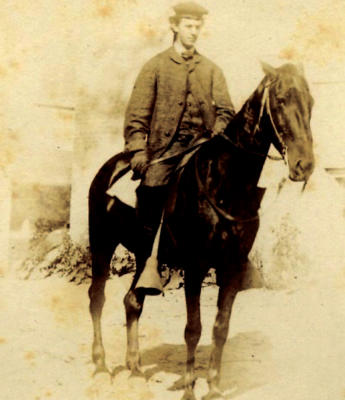


Edward A. Whitney
Whitney Benefits
An Educational Foundation by the late Mr. Edward A. Whitney

© Whitney Benefits, Inc. All Rights Reserved
Phone: 307-674-7303
AN UNORTHODOX BUT
VISIONARY MAN
Mystery makes the life of Sheridan area benefactor Edward Augustus Whitney a compelling story. When he died in 1917, he left a financial legacy of $852,000 or approximately $14 million in today’s dollars, but little personal history. Although some of Whitney’s relatives became famous for their extreme wealth, Edward Whitney came from only modest riches, the legacy of enterprising and intellectually confident ancestors.EARLY LIFE
The third child of Abel and Pamelia (Babcock) Whitney, Edward Augustus was born March 24, 1843, in Dalton, Massachusetts. Edward’s father, Abel, was a prominent merchant in the wholesale flour business. Edward’s brother John, was four years his senior. Edward also had two sisters; Clarissa, two years older, and Mary Louisa, two years younger. Tragedy struck the family when Edward was very young. His sister Mary Louisa died in 1846, and in 1849, both his mother and older sister died within three months of each other. Between 1843 and 1850 the family moved from Dalton on the far western side of the state, to Lowell, Massachusetts, in the northeast corner of the state. In Lowell, Edward’s father owned a book store and his brother John worked there as a clerk. Edward’s father Abel remarried in 1850, this time to Belinda Baxter Bliss, and they had two children, Henry Dwight and Mary Ella. From 1856 to 1859, Edward attended the Sillig Institution, a boy’s school near Vevey, Switzerland. The school promoted its high quality education in classical, scientific, military, and commercial subjects, as well as guidance in general, moral, mental, and physical development. All lessons were taught in French, and the school itself was located on the Swiss Riviera, an area noted for its healthful climate. Great emphasis was placed on healthful outdoor exercise, and hiking in the Alps was apparently one of Edward’s favorite activities. Tragedy struck the family again, when Henry died in 1860, and Mary Ella died in 1867. After returning from Switzerland (1859), Edward, now 17, moved to Northampton, Massachusetts and lived with his uncle, Josiah Dwight Whitney. Now retired, Josiah had been in the flour business, and was a broker and private banker before becoming the cashier (manager) of the Northampton Bank. In the 1850s he served as the bank’s President and Director. Uncle Josiah was also active in charity, community, and church work. Josiah had a very large family (in fact, Josiah fathered fourteen children with two wives) and Edward must have enjoyed his cousins immensely. According to the 1860 Census, Edward worked as a clerk in his uncle’s bank, and his cousin Henry, who was the same age, was a student at Yale College.CIVIL WAR
In August 1862, Edward and his cousin Henry (both age 19) enlisted in the 52nd Massachusetts Volunteer Infantry Regiment. Their unit was involved in the assault of Port Hudson in July 1863, which gained control of the Hudson River for the Union Army. Both Edward and Henry rose in the ranks and mustered out at the end of their nine month term of enlistment. Cousin Henry served in other positions related to the war, and later resumed his studies in theology at Princeton. He was later a pastor in the Congregational Church, a professor of rhetoric and English literature at Beloit College, Wisconsin, and retired as the librarian of Blackstone Memorial Library, Branford, Connecticut.GOING WEST
By the time he was 25, Whitney was fluent in French, had lived in Switzerland, traveled Europe extensively and served in the Civil War. He left all that behind and came west, first to Iowa, then to Wyoming. There is a chance that Whitney arrived in Iowa after returning from a visit to Yellowstone before it was a national park. The Whitney papers include a 1928 speech written by the editor of the Sheridan Post- Enterprise, L.L. MacBride, which included the following excerpt about Mr. Whitney: “Once in his earlier days, he read an army report telling of a region that had been found in the great and unexplored Northwest where steaming geysers could be seen on every side. Mr. Whitney immediately came west as far as the railroad would take him, and then traveled up the Missouri and the Yellowstone to Fort Benton on a little mud steamer. Then he set out through the wilderness for the Union Pacific railroad in the Snake River country. But he saw the wonders of what later was to become Yellowstone Park.” If correct, this would have made Mr. Whitney one of the first white men to enjoy the incredible wonders of what years later would become Yellowstone National Park. In 1885, Whitney arrived in Sheridan. It has also been said that Whitney came to the Sheridan area for his health. His medical records indicate he suffered from chronic bronchiectasis, one of the chronic obstructive pulmonary diseases. This condition may have caused Whitney to keep to himself, but the dry western climate offered some relief. It seems remarkable that despite his cosmopolitan background, this highly educated, well-traveled, and well-to-do man of the world, somehow made his way to the brand new town of Sheridan, WY platted only three years earlier. He never married and had, with one exception, no connection with his birth family. Solitary and introverted (but not anti-social) Whitney died an enigmatic figure. Mr. Whitney died at the age of 74 on November 18, 1917 in his living quarters above the bank where he’d lived his entire life in Sheridan. The cause of his death was chronic bronchiectasis, from which he had suffered for a number of years. Whitney’s will instructed that his cremated ashes be divided and half buried at Sheridan’s Mount Hope Cemetery. The inscription on his headstone reads “What a man really believes seems to him to be really true, but that does not make it so, except to his mind.” The other half were to be buried across the lake from the boarding school he had attended as a boy. His wishes were very specific; the burial site was to have an unobstructed view of the Dent du Midi Mountains near Lake Geneva, Vevey, Switzerland. Joseph Dayton Thorn, the executor of Whitney’s estate deposited the ashes in 1921 while on a three month vacation in Europe.WHITNEY TRUNK
The world got a better understanding of Whitney in 2004 when a trunk of his belongings was discovered. It contained land patents, legal papers, number filled journals, receipts from his world travels, but still few personal effects. Still, the documents provided a framework for understanding this mysterious man and his unorthodox but visionary nature. Among Whitney papers is a yellowed adding machine tape with his penciled notes pointing out an error here and there. It is dated November 19, 1917. On the day that Whitney died, he was still calculating his net worth, still taking solace in numbers.‘My estate does not belong to me;
I’m only its steward: it belongs to
the people and I dare not be careless
with it.’ - Edward A. Whitney
WHITNEY BENEFITS
FOUNDATION
Edward A. Whitney willed his estate to establish Whitney Benefits, creating the first educational foundation in Wyoming. According to his original trustees, Whitney spent three decades of his life planning his gift to the people of Sheridan County. He made extensive investigations in the East as to how trust funds were structured for education, and repeatedly asked his three associates, later to become the trustees of his estate, for suggestions. The foundation was established in 1927, ten years after his death in 1917, as provided by his will. In the years since the establishment of the foundation the earnings from the trust have provided over $46 million in interest-free loans to over 6,100 local students, contributed over $101 million to Sheridan College, provided over $11.7 million to the YMCA, built Whitney Commons Park and the Sheridan Ice Rink, established the downtown Whitney Center which houses the Sheridan College Simulation Center, and benefited the area and its people in many other ways. Whitney left two legacies: an educational foundation, Whitney Benefits, and an unorthodox but visionary will that has become one of most enduring legal instruments in Wyoming trust law. Whitney is famously remembered for the quote, “My estate does not belong to me; I am only its steward, it belongs to the people and I dare not be careless with it.” The will was Whitney’s passion and he never let it rest. He began writing the document in 1890 and was still amending it weeks before he died in 1917. The will establishes that the foundation can fund three areas:1. To create an interest free student loan program to help both “the hand worker and the brain worker” with educational expenses. 2. To create a community center for the advancement of education and benefit the residents of Sheridan County that must be located in the city of Sheridan. 3. To establish and fund an agricultural college in Sheridan, Wyoming. In 2011, Whitney Benefits announced the launch of two individual books regarding Edward A. Whitney and the Whitney Benefits foundation by Sam Western. The books “The History of Whitney Benefits” and “Solace in Numbers,” a biography of Edward A. Whitney, are available at Sheridan Stationery Books Gallery located in Sheridan. -- --- -- Follow this link to read the eulogy from Mr. Whitney's funeral services held at 2:00 pm on Tuesday, November 20th, 1917 as read by Rev. C.F. Fisher.
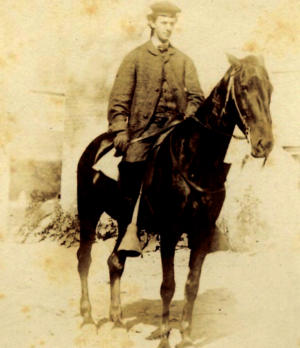
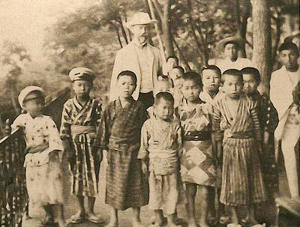

Edward A. Whitney
© Whitney Benefits, Inc.
All Rights Reserved
Phone: 307-674-7303

















